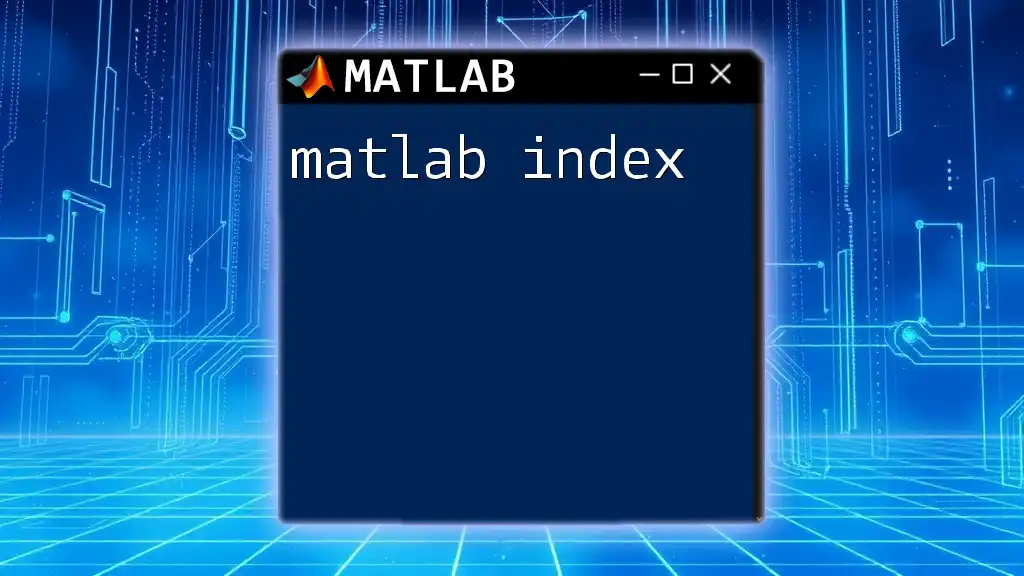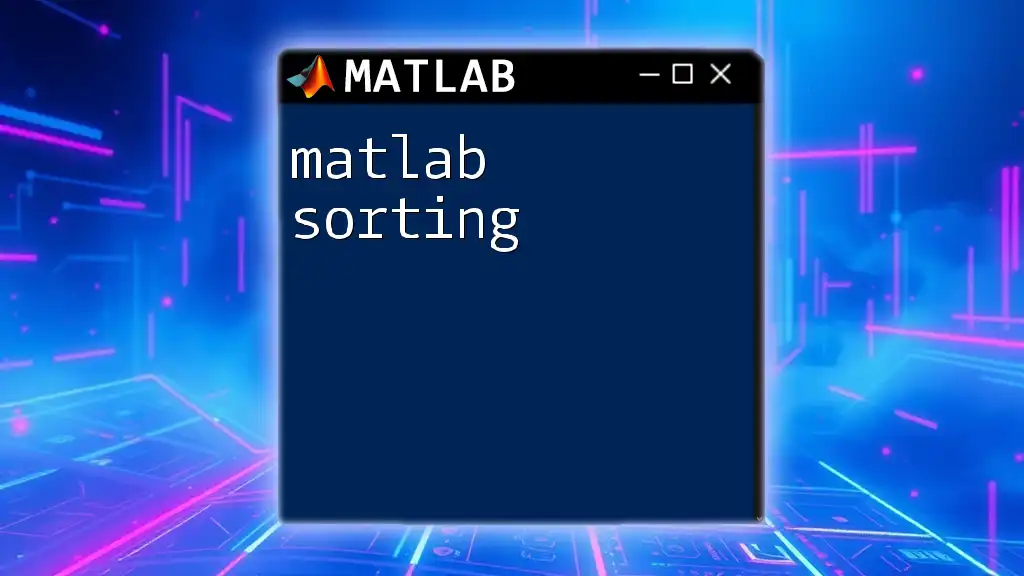The `sub2ind` function in MATLAB converts subscripts (row and column indices) to a linear index for accessing elements in a matrix, allowing for efficient data manipulation.
Here's a code snippet demonstrating its usage:
% Example: Convert subscripts to a linear index for a 4x4 matrix
rows = [2, 3, 1];
cols = [3, 4, 2];
linearIndices = sub2ind([4, 4], rows, cols);
disp(linearIndices); % Output: [11, 16, 6]
Understanding sub2ind in MATLAB
Definition and Purpose
The `matlab sub2ind` function serves as a powerful tool that allows you to convert subscripts or multidimensional indices into a single linear index. This is particularly useful when working with matrices or higher-dimensional arrays, enabling you to access elements efficiently without cumbersome indexing.
Syntax of sub2ind
The basic syntax of the `sub2ind` function is as follows:
linearIndex = sub2ind(arraySize, rowSubscript, colSubscript)
- arraySize: This parameter specifies the size of the array you are working with. It is critical to provide this accurately to avoid indexing errors.
- rowSubscript: Represents the row indices of the elements you want to access.
- colSubscript: Represents the column indices (or additional dimensions for higher-dimensional arrays).
Functionality of sub2ind
The primary functionality of `matlab sub2ind` is to seamlessly translate subscripts into a linear index. For example, when dealing with a two-dimensional matrix, each element can be accessed via its row and column indices. Underneath the hood, MATLAB employs linear indexing for efficient memory access. This conversion is especially handy for accessing multiple elements scattered throughout a matrix in a more streamlined fashion.
Practical Examples
Example 1: Basic Usage
Suppose you have a simple 2D matrix, and you want to access a specific element. Here’s how you can employ `sub2ind`:
A = [1 2 3; 4 5 6; 7 8 9];
linearIndex = sub2ind(size(A), 2, 3);
element = A(linearIndex); % Output: 6
In this code snippet, we first define a 2D matrix `A`. The call to `sub2ind(size(A), 2, 3)` calculates the linear index corresponding to the element located at the 2nd row and 3rd column. The `element` variable then retrieves that specific entry, which is `6`. Using `sub2ind` not only clarifies the intent but also assures accurate indexing without the risk of manual calculation errors.
Example 2: Using with Higher Dimensions
Now, consider accessing elements in a 3D matrix. The `matlab sub2ind` function can handle this as well:
B = rand(2, 3, 4); % Creating a 3D array
linearIndex = sub2ind(size(B), 2, 3, 4);
element = B(linearIndex); % Retrieves an element from 3D matrix
In this instance, we’ve created a 3D matrix `B` containing random values. The `sub2ind` function translates the indices `(2, 3, 4)` into a linear index that points to a specific entry in the 3D array. Getting the correct linear index simplifies the process of extracting the desired element.
Common Use Cases for sub2ind
The versatility of `matlab sub2ind` shines through in various scenarios:
- Efficiency in Data Handling: When working with large matrices, using linear indexing instead of multidimensional subscripts can result in faster data access and better performance.
- Matrix Manipulation: In situations where element retrieval is part of a larger operation—such as transformations, filtering, or mathematical computations—`sub2ind` serves as an elegant solution for maintaining clarity in your code.
Advantages of Using sub2ind
-
Increased Clarity and Readability: By using `sub2ind`, you minimize the complexity of your code. The direct mapping of subscripts to a single linear index makes it easier for others (and yourself!) to understand the logic behind your indexing.
-
Performance Benefits: Furthermore, accessing elements using a linear index can be computationally more efficient, especially when iterating over large matrices. This could result in significant speed-ups in your algorithms.
Pitfalls and Common Mistakes
While `matlab sub2ind` is a robust tool, there are some common mistakes to watch out for:
-
Out of Bounds Errors: One of the biggest issues can arise when the provided indices exceed the dimensions of the array. Ensure your row and column subscripts are within valid ranges to avoid runtime errors.
-
Dimensionality Concerns: Be cautious about the structure of your input parameters. When using higher dimensions, it is crucial to match the dimensionality correctly; otherwise, you’ll encounter indexing issues that can compromise data retrieval.
Conclusion
The `matlab sub2ind` function is an invaluable asset for any MATLAB user seeking to simplify and optimize their index handling in multidimensional arrays. Its ability to convert subscripts to linear indices opens up new avenues for programming efficiency, making it essential to master.
Additional Resources
For further exploration of `sub2ind`, consider reviewing MATLAB’s official documentation, which provides in-depth examples and use cases. Additionally, searching for relevant tutorials and videos can enhance your understanding and offer practical insights into leveraging this function effectively.
Call to Action
Join our MATLAB learning community to deepen your skills further. Sign up for our courses or follow our blog for more quick tips and tricks about MATLAB commands!

















